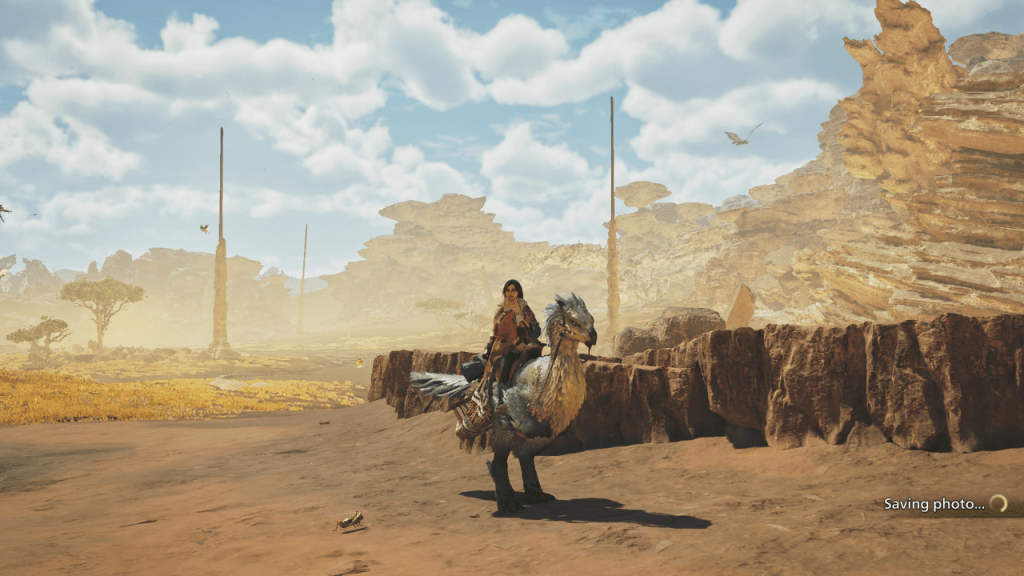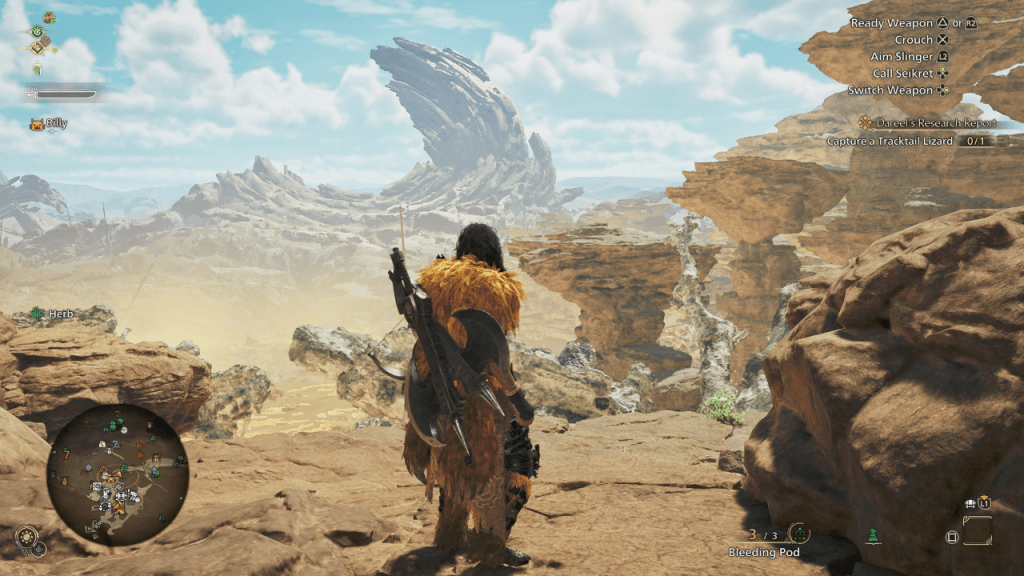"Monster Hunter Wilds: Seasons and Weather Impact Explained"
Seasons and weather play a pivotal role in shaping the dynamic world of *Monster Hunter Wilds* within the Forbidden Lands. Beyond altering the visual landscape, these elements significantly influence gameplay mechanics. Here's a comprehensive guide to understanding and navigating the seasons and weather in *Monster Hunter Wilds*.
Monster Hunter Wilds Seasons, Explained

In *Monster Hunter Wilds*, the Forbidden Lands experience two distinct seasons: Fallow and Plenty. The game commences in the Fallow season, characterized by a harsh environment, intense weather events, and a scarcity of resources. This scarcity leads to heightened desperation, making monsters more aggressive and more likely to attack each other than during Plenty.
In contrast, the Plenty season offers a warmer and more welcoming atmosphere, teeming with abundant flora and vibrant environmental changes. During this season, smaller monsters are less hostile and less likely to form packs. The abundance of Endemic Life and various plants during Plenty justifies its name, bringing joy to both the villagers in the Forbidden Lands and *Monster Hunter Wilds* players.
Between these seasons, players encounter brief yet intense weather events known as Inclemency. These events amplify the weather's intensity, setting the stage for dramatic confrontations with Apex Predators. For instance, during the Pinnacle of the Pack Assignment, Hunters face the Alpha Doshaguma amidst the Sandtide, a formidable lightning-filled sandstorm. Throughout *Monster Hunter Wilds*, unique weather events enhance battles against Apex Predators, adding depth and excitement to the gameplay.
How To Check the Seasons and Weather in Monster Hunter Wilds

The Heads-Up Display (HUD) and map in *Monster Hunter Wilds* provide essential information about the current weather and season. The HUD displays icons in the bottom left corner indicating the time of day and season. For more in-depth details, players can access the map and press the prompted button to view the Environment Overview, which includes information on the current weather and season.
Optional Quests in *Monster Hunter Wilds* are replayable and come with specific times of day and seasons assigned to each hunt. Engaging in these quests temporarily transports players to the designated environment, regardless of the current season in the main game.
Related: Monster Hunter Wilds Weapon Tier List (Best Weapons to Use)
How To Change the Season and Weather in Monster Hunter Wilds
Given that the flora and fauna in *Monster Hunter Wilds* are heavily influenced by the seasons of the Forbidden Lands, players may find it advantageous to switch between Fallow and Plenty depending on their objectives. Fortunately, *Monster Hunter Wilds* allows players to change the seasons and weather.
To alter the season and weather, players must set up their tent and rest. Within the tent, navigate to the BBQ Menu and select the Rest option. Here, players can adjust the Environment and Time settings for when their Hunter wakes up.
However, resting in *Monster Hunter Wilds* incurs a cost of 300 Guild Points and is exclusively available to Hunters of High Rank. It's important to note that resting is not possible during an active quest.
This guide covers everything you need to know about the seasons and weather in *Monster Hunter Wilds*.
*Monster Hunter Wilds is available now on PlayStation, Xbox, and PC.*
-
 Jan 27,25Roblox: Bike Obby Codes (January 2025) Bike Obby: Unlock Awesome Rewards with These Roblox Codes! Bike Obby, the Roblox cycling obstacle course, lets you earn in-game currency to upgrade your bike, buy boosters, and customize your ride. Mastering the various tracks requires a top-tier bike, and thankfully, these Bike Obby codes deliver
Jan 27,25Roblox: Bike Obby Codes (January 2025) Bike Obby: Unlock Awesome Rewards with These Roblox Codes! Bike Obby, the Roblox cycling obstacle course, lets you earn in-game currency to upgrade your bike, buy boosters, and customize your ride. Mastering the various tracks requires a top-tier bike, and thankfully, these Bike Obby codes deliver -
 Feb 20,25Where to Preorder the Samsung Galaxy S25 and S25 Ultra Smartphones Samsung's Galaxy S25 Series: A Deep Dive into the 2025 Lineup Samsung unveiled its highly anticipated Galaxy S25 series at this year's Unpacked event. The lineup features three models: the Galaxy S25, S25+, and S25 Ultra. Preorders are open now, with shipping commencing February 7th. Samsung's web
Feb 20,25Where to Preorder the Samsung Galaxy S25 and S25 Ultra Smartphones Samsung's Galaxy S25 Series: A Deep Dive into the 2025 Lineup Samsung unveiled its highly anticipated Galaxy S25 series at this year's Unpacked event. The lineup features three models: the Galaxy S25, S25+, and S25 Ultra. Preorders are open now, with shipping commencing February 7th. Samsung's web -
 Jul 02,22Isophyne Debuts as Original Character in Marvel Contest of Champions Kabam introduces a brand-new original character to Marvel Contest of Champions: Isophyne. This unique champion, a fresh creation from Kabam's developers, boasts a striking design reminiscent of the film Avatar, incorporating copper-toned metallic accents. Isophyne's Role in the Contest Isophyne ent
Jul 02,22Isophyne Debuts as Original Character in Marvel Contest of Champions Kabam introduces a brand-new original character to Marvel Contest of Champions: Isophyne. This unique champion, a fresh creation from Kabam's developers, boasts a striking design reminiscent of the film Avatar, incorporating copper-toned metallic accents. Isophyne's Role in the Contest Isophyne ent -
 Jan 11,25Jujutsu Kaisen Phantom Parade: Tier List Revealed This Jujutsu Kaisen Phantom Parade tier list helps free-to-play players prioritize character acquisition. Note that this ranking is subject to change with game updates. Tier List: Tier Characters S Satoru Gojo (The Strongest), Nobara Kugisaki (Girl of Steel), Yuta Okkotsu (Lend Me Your Stren
Jan 11,25Jujutsu Kaisen Phantom Parade: Tier List Revealed This Jujutsu Kaisen Phantom Parade tier list helps free-to-play players prioritize character acquisition. Note that this ranking is subject to change with game updates. Tier List: Tier Characters S Satoru Gojo (The Strongest), Nobara Kugisaki (Girl of Steel), Yuta Okkotsu (Lend Me Your Stren
